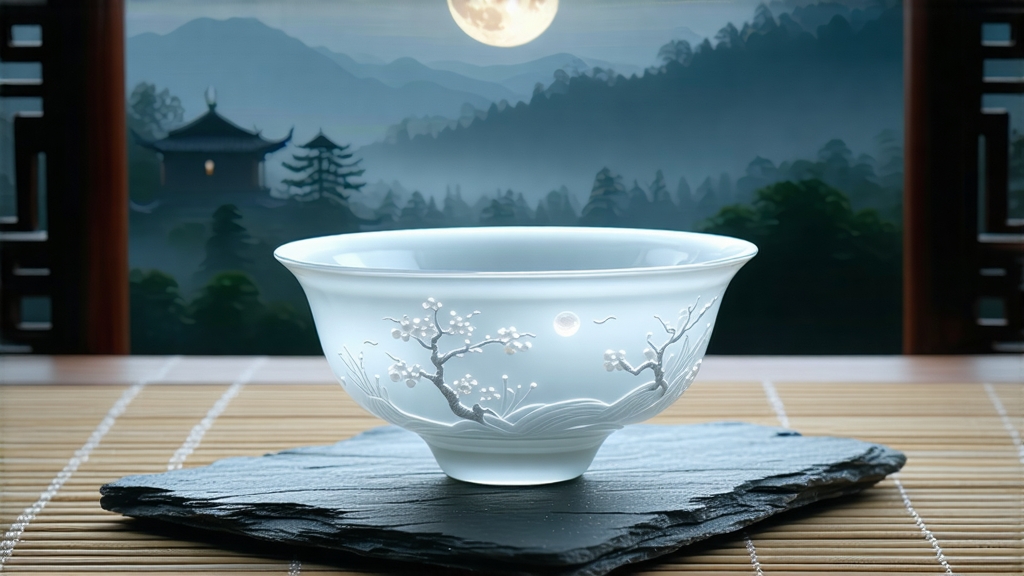
Tucked away in the southwestern highlands of Yunnan, where the Mekong River bends like a silver ribbon beneath jade-green mountains, a tea is born that carries the literal imprint of moonlight. Locals call it Yue Guang Bai—“White Moonlight”—a name that sounds more like poetry than agriculture. Yet every April, when the last chill of spring still lingers at 1 800 m, tea masters rise long after sunset and begin a nocturnal choreography that has remained unchanged for almost four decades. The leaves they pick, wither, and dry under starlight are not the familiar tiny buds of Fujian’s Silver Needle; they are the broad, serrated, ivory-colored tips of Yunnan’s ancient big-leaf tea trees, some older than the people who harvest them. The result is a white tea that tastes of pine honey, wet granite, and the cool breath of a mountain night—an entirely different galaxy within the white-tea universe.
Historical constellations
White tea as a formal category was codified in Fujian during the late Song dynasty, but Yunnan’s moonlight tradition is a much younger, almost clandestine sibling. Oral histories trace its origin to 1983, when a small state-owned factory near Dali tried to rescue frost-damaged spring buds by withering them outdoors overnight rather than firing them in the already-overloaded woks. The pale, almost luminescent liquor surprised the cuppers: softer than pu-erraw, yet more muscular than White Peony. For years the tea remained a regional curiosity, traded along the Tea-Horse Road for Tibetan salt and medicinal herbs. Only after 2003, when compressed 100 g “moon cakes” of Yue Guang Bai appeared at the Kunming International Tea Expo, did the specialty attract wider attention. Today it is still produced in micro-batches—estimates range from 12 to 20 tonnes annually—making it rarer than many boutique pu-erhs.
From forest to basket: cultivars and picking standards
Unlike Fujian white teas that rely almost exclusively on the small-leaf Fuding Da Bai cultivar, Yue Guang Bai is fashioned from three Yunnan landraces: Da Ye Zhong (big-leaf), Chang Ye Zhong (long-leaf), and the purple-veined Ye Sheng variant. The biochemical consequence is striking: almost twice the polyphenol mass of Fuding material, yet tempered by Yunnan’s slow, cool spring metabolism. Picking occurs only between 9 p.m. and 3 a.m. on waxing-moon nights; the belief is that lower nighttime temperatures and reduced oxidation enzymes preserve a brighter, jade-green vein inside the bud. Standard grades are:
- Moonlight Needle (Yue Guang Zhen): 100 % unopened bud, downy silver, ≤ 1.5 cm length.
- Moonlight Peony (Yue Guang Mu Dan): one bud and first two leaves, leaf still folded like a paper fan.
- Moonlight Shou Mei: one bud and three to four leaves, harvested later in the season, carrying more forest-floor aromatics.
The no-fire wither: craft choreography
Once baskets woven from bamboo arrive at the tiny hilltop work shed, leaves are spread on rectangular screens woven from river reeds. No sunlight, no heated air, no machine tumbling—only the mountain breeze and the moon. Ambient humidity hovers around 72 %, temperature 14–16 °C. Masters shuffle the trays every forty minutes to equalize moisture, a rhythm they compare to “turning the pages of a sleeping book.” Forty-eight hours later, when leaf moisture drops to roughly 18 %, the tea is transferred to a low-temperature charcoal loft (28 °C) for what locals call the “dream phase”: another twelve hours of rest that coaxes a subtle malty note without oxidizing the leaf past the white-tea threshold. The entire cycle consumes three nights and two dawns; any exposure to direct sun is considered fatal, instantly flipping the tea into the green-tea register.
Compression and aging potential
Although sold loose, Yue Guang Bai is frequently stone-pressed into 100 g discs or 250 g bricks using the same cloth-wrapping technique once reserved for pu-erh. Because the leaf is only lightly withered, enzymatic activity remains alive; over five to eight years the tea